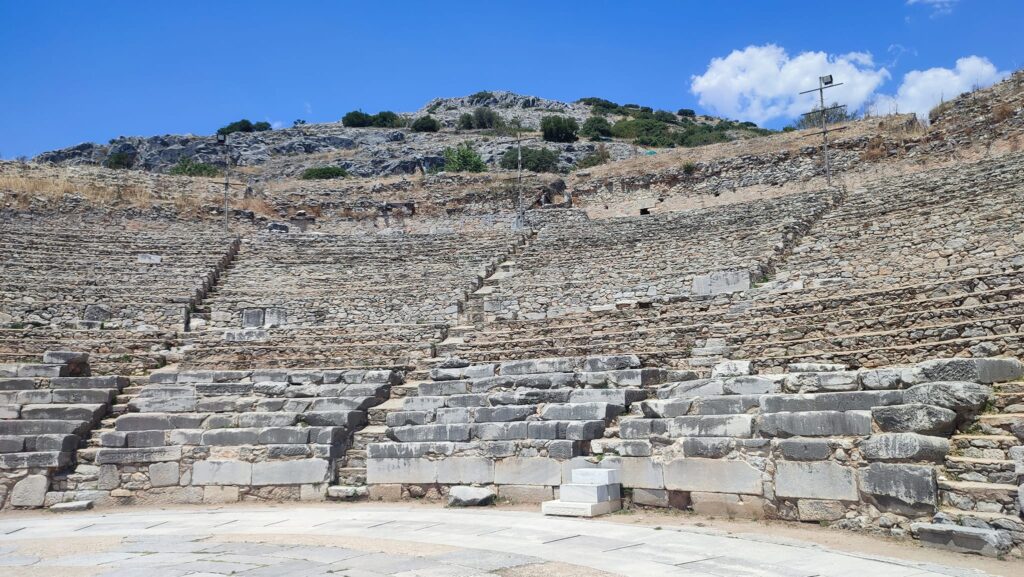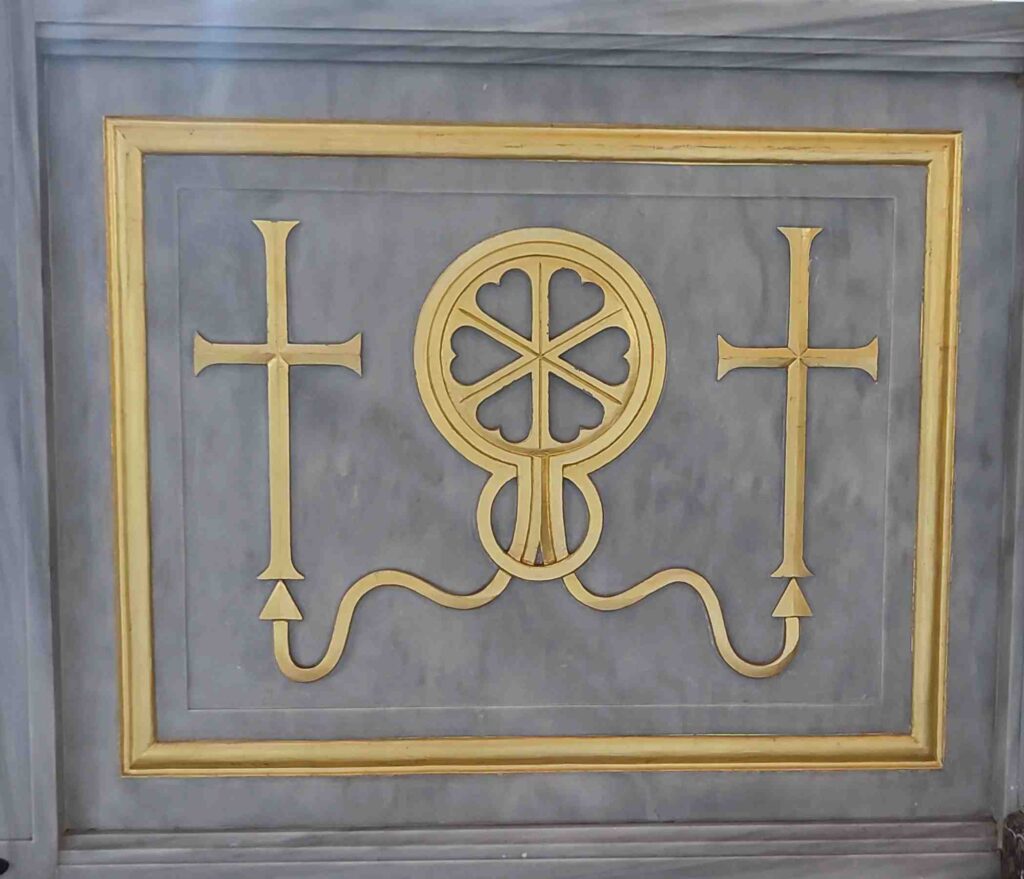Philippi archaeological site
Philippi archaeological site, the French legacy
Pierre Belon (1517-1565) was a French naturalist and physician, well known for his travel chronicles and works as a self-taught naturalist rather than for his secret services to the Cardinals du Bellay and Tournon, France.
Belon was a man of the sixteenth century and a fine example of a humanist traveler-researcher, devoted as he is to the quest for truth, in his case almost exclusively in relation to matters of botany or zoology. From 1551, Belon had dedicated himself to writing and publishing his works with his own illustrations. Several European publishing houses translated, reprinted and distributed his chronicles thus contributing sharing his knowledge and experiences throughout Europe.

Belon visited Philippi round 1540, finding only ruins of the glorious past of the city. Ottoman Turks used Philippi archaeological site as a quarry as it was not of any religious or cultural worth to them. Still the name survived as he asked the locals about it and they replied that the name was Little Philippi in Turkish. In addition, nobody knew when exactly or who abandoned the city.

He was a truly reliable informant, and his work was the basic manual for all travelers & explores to Southeastern Europe until Joseph Pitton de Tournefort. He visited the Aegean archipelago and the East in 1700-1702, and his detailed work, published in 1717, became the model for the description of Greece and the Greek islands.
Early wanderers – travelers often describe Philippi in their journals however, Georges Perrot is the first to conduct an archaeological description in modem day terms. He visited Philippi in 1856 and published his work in 1860. His work resulted in an onsite extensive research by French Archaeological Mission in Macedonia during 1861.Excavations by the French School of Athens began in the summer of 1914, resuming in 1920 after the end of the Great War or WW1, and once again continued until 1937.

During this time, excavations brought to light the theatre, the forum, Basilicas A and B, the baths, and the city walls. After WW2, Greek archaeologists returned to the Philippi archaeological site. From 1958 to 1978, the Athens Archaeological Society followed by the Greek Archaeological Service and the University of Thessalonica, uncovered the bishop’s quarter and the octagonal church, large private residences, a new basilica near the Museum, and two others in the Necropolis east of the city. Nowadays excavations continue by Greek archaeologists, bringing to light amazing artifacts and providing further insights into the city’s great history.

Philippi: A Crossroads of History
Philippi, a UNESCO World Heritage site, is a captivating archaeological gem nestled in northeastern Greece. Its significance spans centuries, intertwining with the threads of Greek, Roman, and early Christian history. Founded by Philip II of Macedon in 356 BC, Philippi was strategically located on the Via Egnatia, a vital Roman trade route connecting Europe and Asia. The city also flourished as a Hellenistic center, boasting a theater, walls, and a major idolatry temple.

Birthplace of European Christianity
Philippi’s historical importance extends far beyond the realms of politics and warfare. The city played a pivotal role in the spread and establishing of Christianity. According to the Book of Acts, Apostle Paul visited Philippi, where he converted Lydia into the first European Christian. The city became a focal point for early Christian communities, and its archaeological remains, including early Christian basilicas and Saint Paul’s prison cell, bear witness to this significant chapter in global religious history.

Philippi archaeological site treasures
Today, Philippi offers visitors a captivating glimpse into its rich past. The archaeological site is a treasure trove of historical artifacts, including:
- Fortified walls and acropolis: Remnants of the city’s defensive structures.
- Roman Theater: A well-preserved Hellenistic theater highlighting the city’s vibrant cultural and social life.
- Roman Forum: The heart of the Roman city, featuring public buildings and administrative centers.
- Basilicas A and B: Impressive early Christian churches still reflecting the city’s religious significance.
- Octagonal church: A unique architectural marvel dedicated to Saint Paul.
Philippi’s enduring legacy is a testament to its multifaceted role in shaping the course of global history. From its origins as a Macedonian stronghold to its pivotal moment in Roman history and its embrace of Christianity, Philippi stands as a remarkable example of the interconnectedness of cultures, religions and civilizations.

Explore Philippi archaeological site at your own pace
Philippi archaeological site visits for small groups offered by Thessaloniki day trips. Ideal private and guided day trips to Philippi from Thessaloniki or Kavala port. All our Thessaloniki private day trips can accommodate your group in one of our minivan (max 6 guests), or Mercedes Sprinter minibus (max 12 guests). We can start your private tour from any location, including all Thessaloniki hotels or from Thessaloniki Port for our guests arriving via cruise ship. We also pick up from the SKG Thessaloniki International Airport or Airbnb Vacation Rental for a small fee. Philippi is 180km form Thessaloniki and our Philippi day trip is a full day round trip, covering about 400km or 250 miles.

Your chauffeur and local guide
Michael E. Nalbantis is both your driver and local guide for all your Thessaloniki day trips. Thessaloniki born and grown, English speaking and a Google Maps local guide level seven. Also available licensed tour guides for Philippi archaeological site and monuments upon timely request at an extra cost.

Availability & rates
For more info (availability – rates) on our Philippi private tours from Thessaloniki, please click here or simply call Michael at +306976888113
Also available SKG Airport pick-ups & drop offs upon request.

.









